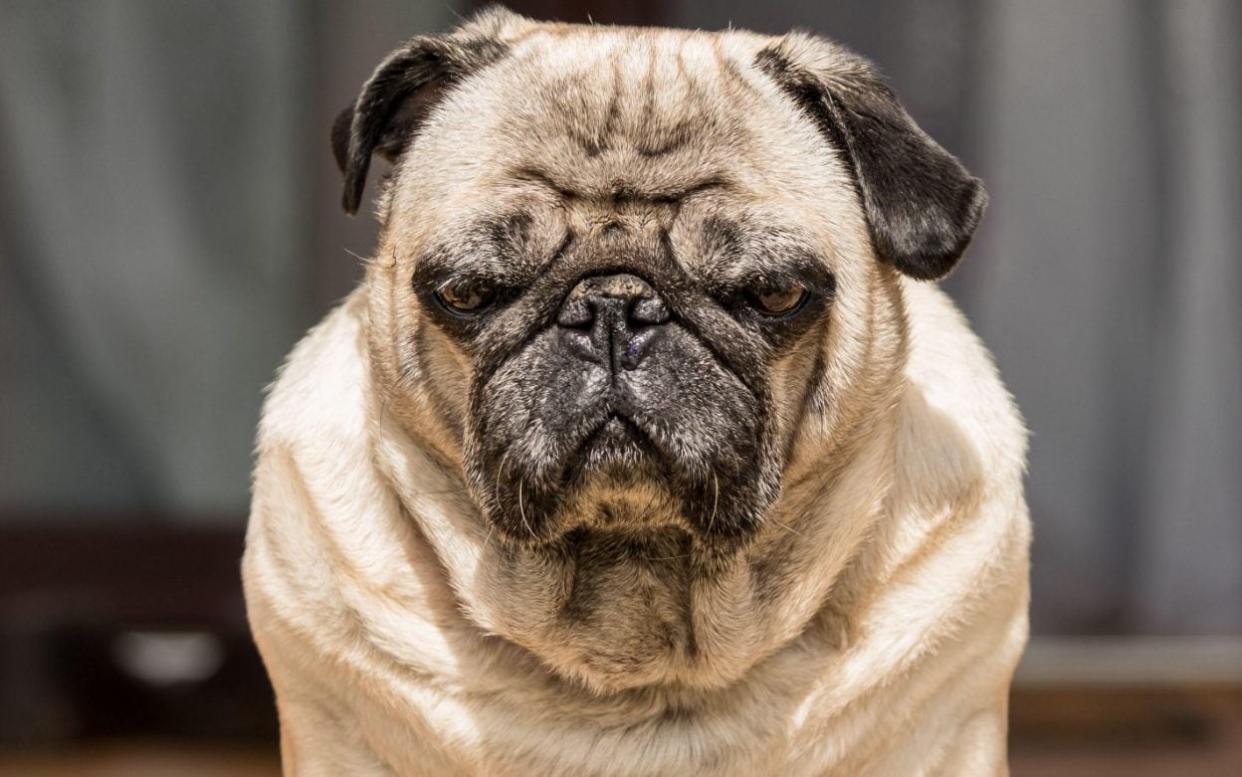Pugs are not ‘typical dogs’ because of their ‘lifetime of suffering’, says study

Pugs can no longer be considered a “typical dog” because extreme breeding has given them a long list of severe health issues.
The desire for extreme, baby-like dogs with bulging eyes, folds of skin and flat faces has led to long-lasting and life-shortening health problems, which mean the animal is subjected to a “lifetime of suffering”.
Dr Dan O’Neill, senior lecturer in companion animal epidemiology at the Royal Veterinary College, told The Telegraph that pugs lacked the “basic functions” expected of a canine.

“We have dogs that are typical, like Labradors, where they have a long nose and a tail and are not that dissimilar to a wild dog,’’ he said.
“Obviously, they have a different temperament but physically they just look like a wolf or a coyote or a dingo or a fox.
“We’ve drafted a list of core body functions that any dog should expect to be able to do when it’s born and when it’s alive and these are very basic.
“For example, they should be able to blink. It doesn’t feel like a big ask that a dog can blink, but many pugs can’t fully.
“A dog should be able to sleep without having to constantly wake up to breathe. It doesn’t seem like a big ask that a dog should be able to sleep.
“A dog should be able to sit there without snoring and snorting and struggling to breathe. A dog should be able to have skin that isn’t folded and not have crevices with infections and smell. These are really basic things. Pugs just don’t have those basic functions.”
Dr O’Neill led a study of more than 16,000 pugs in Britain and found the breed to be more than 50 times more at risk of both brachycephalic obstructive airway syndrome and narrow nostrils, both of which lead to breathing issues, than non-pugs.
Of 40 common health conditions, pugs are at an increased risk for 23 of them, including being at 13 times greater risk of eye ulcers and 11 times greater risk of skin fold dermatitis.
Pugs are also more likely to be obese. One in six pugs are obese, compared with one in 15 other dogs.
“The flip side of this is that pugs and French bulldogs and English bulldogs are often beautiful, beautiful dogs in terms of personality and temperament. That is almost to their disadvantage, because they’re actually such nice dogs,” Dr O’Neill added.
“We should, as humanity, be able to put on our big girl and boy trousers and make a decision to get breeds that have basic, innate health features - blinking, breathing, mating, giving birth and skin that is comfortable. These are not big asks.
“The owners of these dogs will often say that they’re special dogs, but they’re special because their health needs are so much greater than other dogs. That might make them unique, but probably not in a good way.”
A recent RVC study found French bulldogs have the shortest life expectancy of any breed, at just four and a half years. Jack Russell terriers live the longest, at 13 years on average.
Other flat-faced breeds – English bulldogs, pugs and American bulldogs – were in the bottom four, alongside French bulldogs, with none of them expected to live more than eight years at the time of birth.
“The public hasn’t twigged to the link between the dog’s higher risk of health issues, their decision to buy that type of breed instead of a more moderate breed, and the fact that they’re imposing a lifetime of suffering on these dogs,” Dr O’Neill said.
The new findings are published in the journal Canine Medicine and Genetics.

 Yahoo News
Yahoo News 
